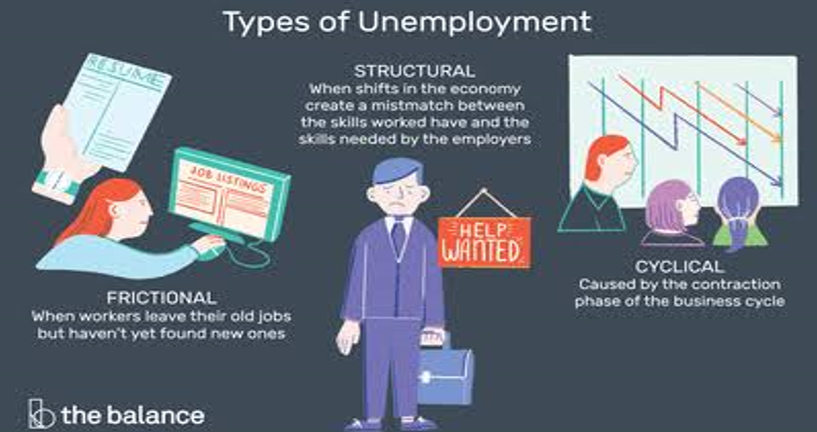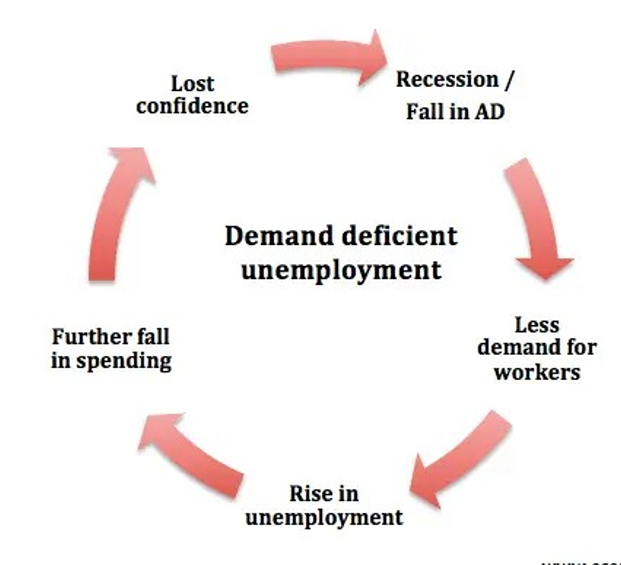- Umang Sagar
- National Issue, Recent article, Social Issue
Unemployment

What Is Unemployment?
Usually, Unemployment is a term that refers to graduates who are skilled and efficient to work and actively seeking the job but find it difficult to find one. As we all know employment plays a role in the health of the economy. The income and the expenditure of the country must be balanced in a harmonious relationship.
The unemployment rate of the country serves as a key indicator of the economy which shows the ability or the inability of a worker to readily obtain work. This term also includes people who are looking for jobs, People who have been discharged from their job and looking to be employed again, retired people, people going for higher studies, disability & personal issues, and also people who quit looking for jobs.
High rates of unemployment indicate economic distress and over-employment indicates a heated economy. When there is more number of unemployed people the consumption of the products which will again bring the relaxation of the overstressed economy. On the other hand a low rate of unemployment, the economy will work to almost its full capacity. Many governments allocate allowances for many unemployed who fulfill the required criteria. More unemployed workers mean less economic production which, as we know, leads to an over-heated economy.
Types Of Unemployment

- Now we know what unemployment is? So let us get to know its types. There are two main types which are further divided into nine categories. The two main categories are Supply-side and Demand deficient.
1. Frictional Unemployment:-
This is a type where their types play in the time between employments after graduation or quitting the previous job cannot be inevitable. This type can also be called ‘search unemployment’ as it relates to the time taken to find a new job.
Frictional unemployment is made redundant because finding a job in the free market takes time. And that time gap is always good for it also gives time for the employee to get to know about the field and the scope of his skills and knowledge.
It can also be called ‘voluntary unemployment because the person is willingly remaining unemployed by not taking up the first job that comes along.
1. Impacts:-
Frictional unemployment is not necessarily ineffective. For example, it might be right for a Ph.D. Scholars wait for his/her desirable job than to be an accountant in small firms. The willingness to wait gives a great option of choice for the employer from among the wide range of candidates.
Though there are positives for short-term unemployment, there is a negative impact also. This causes households with limited income and limited savings which again cause fall behind in bill payments that end up in more debts. This creates stress in the person which reduces the confidence level of those without work.
2. Remedial Measures:-
Taking up jobs of lower benefits may considerably help the person. Though it is not a desirable job it can help the person financially. Though it is not clear whether it is advisable for it may create a negative impact on the person.
Internet job matching websites may be appropriate to find one’s desirable job more quickly and easily. The seekers can easily apply for a job if it is comprehensive. Nowadays government undertakes a job matching sector to diffuse the competition of the private sector.
3. Trends:-
During the time of recession, frictional unemployment tends to fall for people who are not ready to take any risk, so they continue with the same job they are in or take up the first job that comes along.
UK and USA have met a fall in unemployment rate partly due to lower frictional unemployment and improved job matching websites.
2. Structural Unemployment

This is caused by the mismatch of skills in the labor market. It can be caused by many reasons.
1. Occupational immobility:-
This is the difficulty in learning new skills to fit in the job according to the changing pattern of the industry. There are technological changes in the industry that makes it harder to survive. For example, a farmer from a village finds it difficult to find jobs in a metropolitan city.
2. Geographical immobility:-
Mostly there is a distance between a person’s place of stay and a place of work. Some jobs may also require shifting from one place to another. This is also a major cause. It is also challenging for the person to find accommodation too.
3. Technological challenges:-
There is a rapid change in technology over time. If a company developed a Labor-saving technology, there will a fall in demand for some type of laborers for they will be replaced by machines.
4. Structural changes in society:-
The decline of some companies is due to the lack of competitiveness among the companies and many workers ended up jobless. Further, they found it difficult to find jobs in new industries with improved technology.
3. Classical Or Real-Wage Unemployment
- This is a situation where the wages of an employee which is pushed above the equilibrium. The daily wage of a worker is above the market-clear wage rate, which leads to a surplus of the labor force. It is also called real-wages unemployed for it signifies the wages are too high than the normal.
1. The graph of classical wages:-
- In the diagram, the quantity of labor in the free market is referred to as Q1. But the wages being kept atW2, the supply at Q3 is greater than the demand at Q2.
2. Keynesian theory:-
- This theory argues that the fall in the wage rate will lead to a fall in aggregate demand (AD). In this case, cutting down wages will negatively result in classical unemployment.

4. Voluntary Unemployment
Voluntary unemployment is a state where the person remains unemployed intentionally for the individual is not satisfied with the present wage rate.
1. Reason:
- An individual remains unemployed voluntarily for he/she intends to find a job suited for his/ her qualifications. Some people are not interested in jobs for the benefits available for the unemployed are high. The taxes are too high which makes the take home very low. In some cases, the jobs are so demanding and tedious.

Example:
- In the 1970s and 1980s, the benefits for unemployment were high and, were easy to claim those benefits. There were no particular rules that the person must take up a job of any nature in the future. This made the youngsters feel jobs are less important. Later in the following decade, the eligibility for those benefits was tightened which arguably reduced Voluntary unemployment.

5. Demand Deficient Or Cyclic Unemployed
- In this case, the output of a particular country falls. When the output falls companies recruit fewer staff. This case occurs when the economy of the country of less than the full capacity. At that time the unemployment rate tends to rise. During the recession, the companies lay off workers which remains to be one of the reasons for such cases.
Example:-
- In the UK such cases were some of the main causes of unemployment in cyclic factors. During the 1920s the UK economy experienced deflation and low growth which further made it worse during the great depression of the 1930s.
Problems:-
- In many cases, the demand deficient unemployment can further depress the aggregate demand which will again make the recession worse. The rise in the unemployment rate will result in low demand which will give a lower output which again ends up in a fall in demand for workers.

Causes Of Unemployment
- There are a few main causes that remain stable. The caste system, the economic growth rate, increases in population, seasonal occupations are some of the main causes of unemployment.
1. Caste barrier:
- In India the caste system is prevalent. Works of some departments are prohibited to that particular cast. This again results in rising in the unemployment rate.
2. Slow economic growth:
- India being an underdeveloped country the economic growth rate is considerably slow. In such an underdeveloped country the slow growth in the economy will create fewer chances for the graduates.

3. Population growth:
The constant growth rate in India is also the main reason for unemployment. The unemployment rate has increased by 11.1% in the 10th year plan.
4. Seasonal occupation:
There are some seasonal occupations. These occupations earn only minimal earnings which people with these jobs found it difficult to lead on with their livelihood. This also is a major cause of unemployment.
5. Fall in the small scale industry:
Industrial development in India had adverse effects on many small-scale industries. This leads to the fall of many small-scale industries like cottages and artistic works. Many workers who belonged to such industries lost their jobs which led them to be unemployed.
6. Less savings and income:
There is inadequate capital raised from the industries. Above all the capital is being invested judicially. The investment always depends on savings and the savings are too low for any investment. In such cases, companies lay off many employees as they find it difficult to be paid.
Trends In India
| Unemployment Rate (%) | |||
| Month | India | Urban | Rural |
| Nov 2021 | 7 | 8.21 | 6.44 |
| Oct 2021 | 7.75 | 7.38 | 7.91 |
| Sep 2021 | 6.86 | 8.62 | 6.06 |
| Aug 2021 | 8.32 | 9.78 | 7.64 |
| Jul 2021 | 6.96 | 8.32 | 6.34 |
| Jun 2021 | 9.17 | 10.08 | 8.75 |
| May 2021 | 11.84 | 14.72 | 10.55 |
| Apr 2021 | 7.97 | 9.78 | 7.13 |
| Mar 2021 | 6.5 | 7.27 | 6.15 |
| Feb 2021 | 6.89 | 6.99 | 6.85 |
| Jan 2021 | 6.52 | 8.09 | 5.81 |
| Dec 2020 | 9.06 | 8.84 | 9.15 |
| Unemployment Rate (%) | |
| States (India) | Nov 2021 |
| Andhra Pradesh | 6.3 |
| Assam | 4.1 |
| Bihar | 14.8 |
| Chhattisgarh | 1.8 |
| Delhi | 9.3 |
| Goa | 12.7 |
| Gujarat | 1.4 |
| Haryana | 29.3 |
| Himachal Pradesh | 13.6 |
| Jammu & Kashmir | 21.4 |
| Jharkhand | 11.2 |
| Karnataka | 2.8 |
| Kerala | 7.1 |
| Madhya Pradesh | 1.7 |
| Maharashtra | 4.7 |
| Meghalaya | 0.8 |
| Odisha | 0.6 |
| Puducherry | 6.3 |
| Punjab | 6.6 |
| Rajasthan | 20.4 |
| Tamil Nadu | 5.1 |
| Telangana | 4.4 |
| Tripura | 13.4 |
| Uttar Pradesh | 4.8 |
| Uttarakhand | 3.1 |
| West Bengal | 6.7 |
- In India, unemployment rates have increased as a rural area remained underdeveloped to date. In October the unemployment rate rose to 7.75% from 6.86% which was the reading during September. These recordings were from the Center of monitoring economy private limited. Rural unemployment jumped up from 6.06% to 7.91% and the urban unemployment rate has dropped from 8.62% to 7.38% were the readings last month.
Policies To Decrease Unemployment

1. Demand Side:-
- Monetary policies by cutting down the interest rate to boost up the Aggregate demand. This can influence the outcome of the economy. This is a tool to regulate macroeconomic variables such as unemployment and inflation. An expansionary monetary policy generally decreases unemployment because the higher money supply stimulates business activities that lead to the expansion of the job market.

They are implemented by tools like adjusting the interest rates, purchase or sales of government securities, and changes in the amount of cash circulation in the economy. The central bank or other regulatory authorities are responsible for the formulation of such policies.
Fiscal policy can decrease unemployment by helping to increase aggregate demand and the rate of economic growth. The government will need to pursue expansionary fiscal policy; this involves cutting taxes and increasing government spending. Lower taxes increase disposable income and therefore help to increase consumption, leading to higher Aggregate Demand (AD).

With an increase in AD, there will be an increase in Real GDP. If firms produce more, there will be an increase in demand for workers and therefore lower demand-deficient unemployment. Also, with higher AD and strong economic growth, fewer firms will go bankrupt meaning fewer job losses.
Keynes was an active advocate for the expansionary fiscal policy during a prolonged recession. He argues that in a recession, resources are idle. Therefore the government should intervene and create additional demand to reduce unemployment.
Depreciation in exchange is known as a fall in the exchange rate or devaluation in a fixed exchange rate system. It means the currency is worthless compared to other country’s currencies.
When there is depreciation the exchange rates reduce. That means the exports become cheaper and the imports become costlier. This results in an increase in exports and a decrease in imports. Domestic firms will benefit from scale. Thus creating more job opportunities and decreasing the unemployment rate. The increase in aggregate demand will again increase the economic growth rate.
In the case of the state economy, during a time of recession, a fall in exchange rates may help to boost the economy by creating inflation. But if the economy is already facing inflation a fall in the exchange rate may create a worse scenario.

2. Supply Side:-
To reduce unemployment the government may formulate many supply-side policies, such as better education and training, Training for the unemployed, better job information, employment subsidies, and geographical subsidies.
Better education and training will provide better knowledge and understanding and help the long-term unemployed to retrain and find jobs in a fast-changing labor market. This can reduce structural unemployment. However, it depends upon the government whether it can provide the necessary training for the required skills. Unfortunately, there is no assurance that such government spending will be fruitful.

Training for the unemployed odd training provided to the unemployed for creating a perfect CV and to give confidence to the graduates in facing a personal interview directly or in an AI. Such programs are targeted at the long-term unemployed who have lost their confidence by failing to find an app job in the job market.
Better job information is to reduce frictional unemployment which is created when a person shifts from one job to another. Better access to job availability will help to reduce unemployment drastically.
Employment subsidies are those allowances that are granted by the government for the people who take long-term unemployment. However, there is a cautious situation where the company can consider the current employees redundant just for the sake of the subsidies.

Geographical subsidies are given often when unemployment is geographical in scope. There are people who face challenges to move to the place of employment. The government provides more housing facilities near the place of employment or gives more land to private builders.
Maximum working hours may force firms to hire more employees. The argument is that if the working hours are 35 hours, the firm will need to employ more individuals to get the same amount of work done. France experimented with this policy. Though critics argue that the labor market does not work in the same module and it is not advisable to hire the unemployed to do the complex job.
Conclusion

Though there are movements to eradicate unemployment, it still remains unchanged. We all do know that there is a huge market for jobs as well as laborers still unemployment is prevailing. Many policies come and go but the rates do not show drastic change.
But we all have hope that one day our country will be the last on the list of unemployed ratings. The graduates are the future of our country that is strong and capable of building a better country. Employment plays an important role in it. More the employment more the funds come into circulation and more will be the economic growth.
Top 13 Facts About Unemployment
Among all the regions East Asia has a large number of unemployed workers.
In 2013, there were about 157.1 million unemployed workers all over the world.
At 39.4 million, one among the four was from East Asian countries.
The number of unemployed workers in the world’s developing nations is roughly equal to the population of Bangladesh.
However, at 4.5%, East Asia’s unemployment rate — the number of unemployed divided by the total labor force — is quite low.
Among other developing regions, Sub-Saharan Africa has the second-most jobless people (27.2 million), followed by South Asia (26 million).
Sub-Saharan Africa’s unemployment rate was 7.6% in 2013.
North Africa and the Middle East had the highest regional unemployment rates in the developing world in 2013, at 12.2% and 10.9%, respectively.
Other developing regions include Latin America (with 19.3 million jobless), Central and Southeast Europe (14.8 million), Southeast Asia (13.6 million), while North Africa and the Middle East both have over eight million unemployed workers.
There are fewer people employed than at any time in the last 12 years.
There are more workers from the USA; fewer from Europe.
The highest wages are in construction – the lowest in hotels and restaurants.
The number of jobs in the public sector jobs is still going up.




